The story of Marvel Comics is nothing short of legendary—a tale of creativity, innovation, and resilience that spans over eight decades. From its inception in the late 1930s to its current status as a global entertainment powerhouse, Marvel Comics has captured the imaginations of millions worldwide. The journey of Marvel Comics is marked by iconic characters, groundbreaking storytelling, and a unique ability to reflect the cultural zeitgeist. This comprehensive history will take you from the early days of Marvel Comics, through its Golden and Silver Ages, and into the modern era, where Marvel Studios has redefined what it means to be a superhero on the big screen.
The Birth of Marvel Comics: A New Era in Storytelling (1939-1941)
In 1939, as the world teetered on the brink of war, a new form of entertainment began to capture the attention of American youth: comic books. While comic strips had been popular in newspapers for decades, the idea of a full-length comic book was still relatively novel. It was during this time that a young entrepreneur named Martin Goodman, who had already found success in the pulp magazine business, decided to try his hand at this burgeoning industry. Thus, Timely Publications was born, the precursor to what would become Marvel Comics.
Goodman’s first venture into the comic book world came in the form of Marvel Comics #1, published in October 1939. The anthology featured a mix of characters and stories, but it was the introduction of the Human Torch and the Sub-Mariner that would set the stage for Marvel’s future. Created by Carl Burgos and Bill Everett, respectively, these characters were unlike anything readers had seen before. The Human Torch, an android who could burst into flames, and the Sub-Mariner, an anti-heroic prince of Atlantis, were complex, conflicted figures—far removed from the simple, virtuous heroes that had previously dominated the medium.
Goodman knew he was onto something special. The success of Marvel Comics #1 led to a sequel issue, and soon, Timely Publications was churning out more titles. But it wasn’t until the debut of Captain America in 1941 that Marvel truly began to make its mark on the industry. Created by writer Joe Simon and artist Jack Kirby, Captain America was a super-soldier born out of the chaos of World War II. With his iconic shield and unwavering patriotism, Captain America quickly became Timely’s most popular character, embodying the spirit of American resistance against the Axis powers.
The cover of Captain America Comics #1, which depicted the hero punching Adolf Hitler, was a bold statement that resonated deeply with readers. It was clear that Timely, and by extension Marvel Comics, was not just in the business of entertainment—they were in the business of shaping culture.
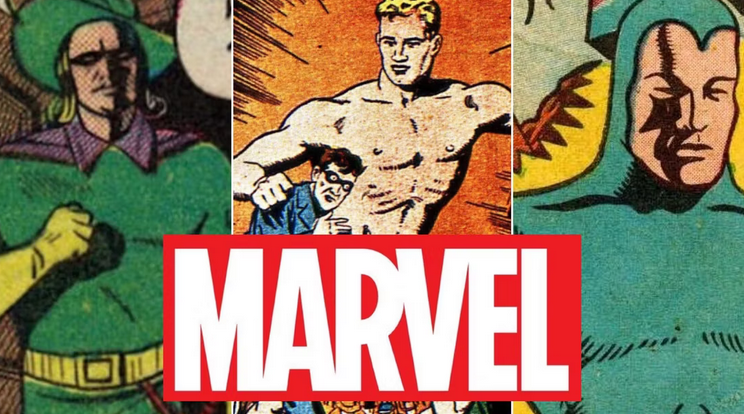
The Golden Age of Marvel Comics: The Rise of Superheroes (1941-1950)
The early 1940s were a golden age for Marvel Comics, as the popularity of superheroes soared to unprecedented heights. Characters like Captain America, the Human Torch, and the Sub-Mariner became household names, their adventures eagerly anticipated by readers young and old. But as the war drew to a close, so too did the superhero boom.
With victory in Europe and the Pacific, American society began to shift. The public’s appetite for wartime heroes diminished, and comic book publishers, including Marvel Comics, struggled to maintain the same level of success. Goodman, always attuned to market trends, began diversifying Timely’s offerings, introducing genres like romance, horror, and crime. While these genres found some success, the once-mighty superheroes of Marvel Comics began to fade into the background.
During this period, Marvel Comics underwent a transformation, rebranding itself as Atlas Comics in the early 1950s. The company’s focus shifted away from superheroes entirely, as Goodman sought to keep the business afloat in a rapidly changing market. While this era is often overlooked in the grand history of Marvel Comics, it was a crucial time of experimentation and survival.
Yet, even as superheroes disappeared from the pages of Marvel Comics, the seeds of their eventual resurgence were being planted. The world was changing once again, and soon, a new generation of readers would be ready to embrace heroes who were more complex, more flawed, and more human than ever before.
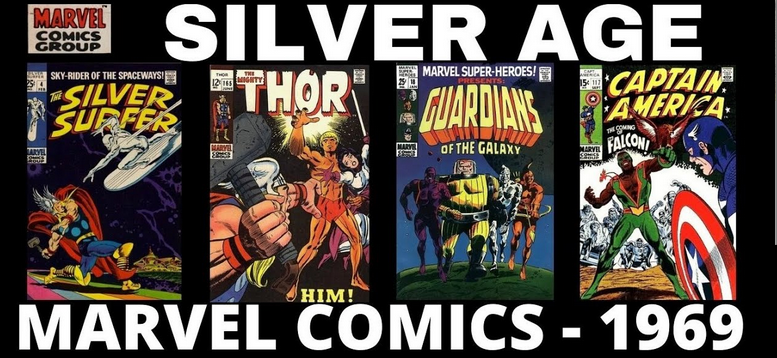
The Silver Age of Marvel Comics: The Birth of a New Heroic Age (1961-1970)
The dawn of the 1960s brought with it a cultural revolution. The post-war optimism of the 1950s gave way to a decade of social upheaval, civil rights movements, and a general questioning of authority. It was in this turbulent atmosphere that Marvel Comics, under the editorial leadership of Stan Lee, would redefine what it meant to be a superhero.
Stan Lee, born Stanley Lieber, had been with the company since its earliest days, starting as an office assistant and working his way up to writer and editor. By the time the 1960s rolled around, Lee was ready to quit. Writing formulaic stories for Atlas Comics’ horror and romance titles had become monotonous, and he longed to create something new, something different.
As fate would have it, Goodman noticed the success of DC Comics’ Justice League of America and tasked Lee with creating a superhero team of his own. But rather than follow the traditional mold of perfect, virtuous heroes, Lee decided to create characters who were deeply flawed and relatable.
Enter Jack Kirby, the legendary artist who had co-created Captain America in the 1940s. Kirby returned to Marvel Comics in the late 1950s, and his dynamic, larger-than-life style was the perfect complement to Lee’s vision. Together, they created the Fantastic Four, a superhero team that was more family than squad.
Fantastic Four #1, published in November 1961, was a game-changer. The story introduced readers to Reed Richards, a brilliant but emotionally distant scientist; Sue Storm, his compassionate fiancée; Johnny Storm, her hot-headed younger brother; and Ben Grimm, a gruff pilot transformed into a rock-skinned “Thing.” The Fantastic Four weren’t just superheroes—they were real people with real problems.
The success of the Fantastic Four opened the floodgates. Over the next few years, Lee and Kirby, along with artist Steve Ditko, would create some of the most iconic characters in the history of Marvel Comics. Spider-Man, the Hulk, Thor, Iron Man, the X-Men—all of these heroes were born during this period, each one bringing something new to the table.
Spider-Man, created by Lee and Ditko in Amazing Fantasy #15 (1962), was perhaps the most groundbreaking of them all. Peter Parker, a nerdy teenager with all the insecurities and problems that come with adolescence, suddenly finds himself gifted with extraordinary powers. But instead of reveling in his newfound abilities, Peter is burdened by the knowledge that “with great power comes great responsibility.” It was a concept that resonated deeply with readers, and Spider-Man quickly became Marvel Comics’ flagship character.
The Hulk, another creation of Lee and Kirby, was a different kind of hero. Dr. Bruce Banner, a mild-mannered scientist, transforms into a monstrous green behemoth whenever he loses his temper. The Hulk was a metaphor for the uncontrollable rage that lies within us all, and his struggles to control his darker side made him one of the most complex characters in the Marvel Comics lineup.
Thor, Iron Man, and the X-Men each brought their unique flavor to the Marvel Universe. Thor, the Norse god of thunder, was a character steeped in mythology, while Iron Man, the alter ego of billionaire industrialist Tony Stark, explored themes of technology and personal redemption. The X-Men, a group of mutants shunned by society because of their genetic differences, served as an allegory for the civil rights struggles of the time.
The success of these characters was due in no small part to the collaboration between Lee, Kirby, and Ditko. The trio worked using what became known as the “Marvel Method,” where the artist would draw the entire issue based on a plot outline provided by the writer, and the writer would then fill in the dialogue and captions. This method allowed for a level of creative freedom and spontaneity that resulted in some of the most dynamic storytelling in the history of Marvel Comics.
The Marvel Method and the Creative Explosion of the 1960s
The Marvel Method wasn’t just a technique—it was a revolution in the way comic books were created. It allowed artists like Jack Kirby and Steve Ditko to bring their full creative vision to the page, often adding their own ideas and expanding the story in unexpected directions. The method also allowed Stan Lee to focus on crafting dialogue that was witty, engaging, and filled with the kind of banter that would become a hallmark of Marvel Comics.
Kirby’s art was explosive and full of energy. He had a unique ability to convey motion and action, making every punch, every leap, and every blast of energy leap off the page. Kirby’s work on the Fantastic Four, the Avengers, and Thor helped define the visual style of Marvel Comics, setting it apart from the more rigid and static designs of its competitors.
Meanwhile, Steve Ditko brought a completely different aesthetic to Marvel Comics. His work on Spider-Man was characterized by its eerie, atmospheric visuals and its focus on the emotional turmoil of its characters. Ditko’s Peter Parker wasn’t a square-jawed hero—he was a gangly, awkward teenager, full of self-doubt and insecurity. Ditko also co-created Doctor Strange, the Sorcerer Supreme, whose mystical adventures were rendered in surreal, mind-bending visuals that reflected the psychedelic culture of the 1960s.
The collaboration between Lee, Kirby, and Ditko resulted in some of the most memorable characters and stories in the history of Marvel Comics. But it wasn’t just the characters that made Marvel special—it was the way those characters interacted with the world around them. Marvel Comics wasn’t just telling superhero stories; it was telling stories about real people with real problems, who just happened to have superpowers.
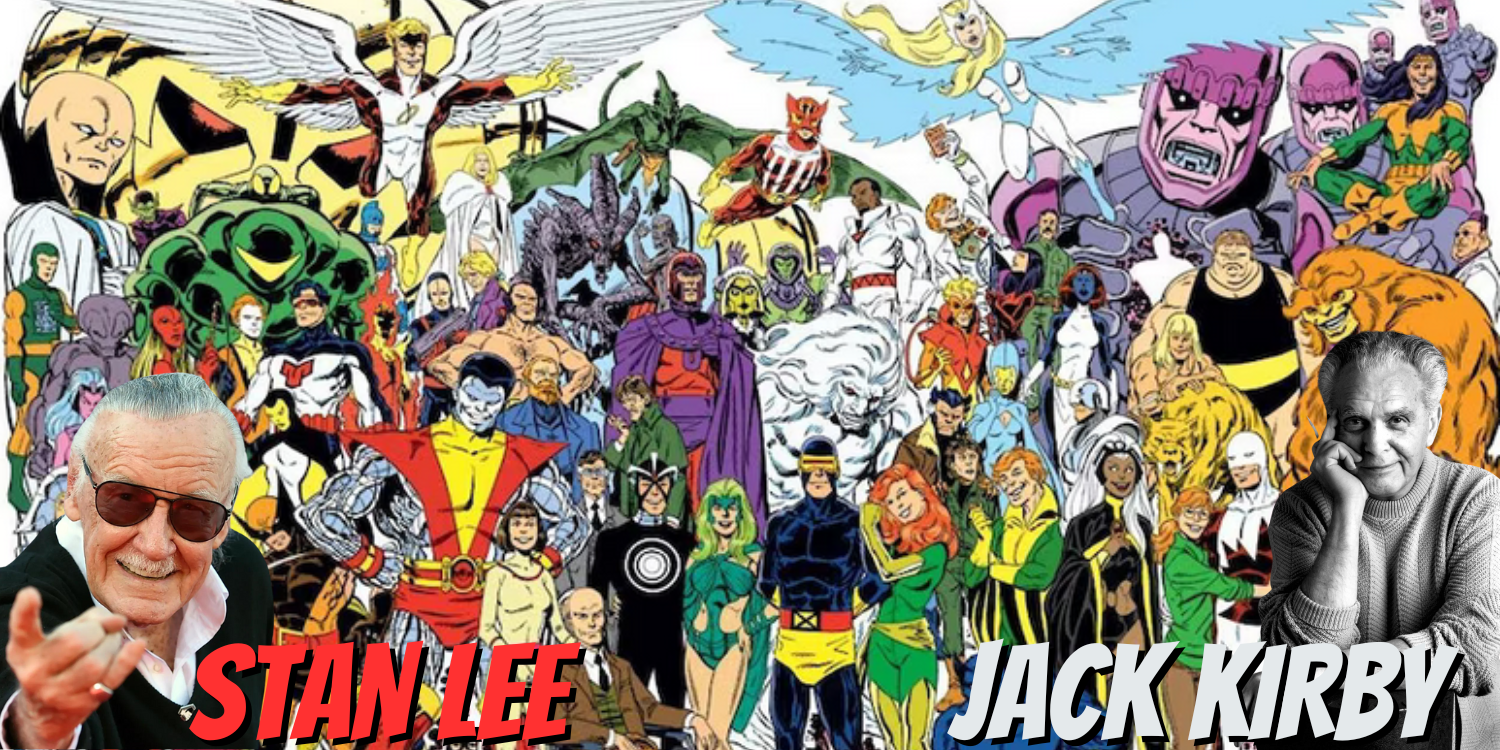
The X-Men: Marvel Comics’ Most Enduring Metaphor
Among the many characters created during Marvel Comics’ Silver Age, none were as culturally significant as the X-Men. Introduced by Stan Lee and Jack Kirby in 1963, the X-Men were mutants—humans born with extraordinary abilities due to genetic mutations. But unlike the other heroes in the Marvel Universe, the X-Men were feared and hated by the society they sought to protect.
The X-Men were an allegory for the civil rights struggles of the 1960s. Professor X, the team’s leader, was a proponent of peaceful coexistence between humans and mutants, much like Martin Luther King Jr. was for racial integration. Magneto, the X-Men’s most prominent adversary, believed that mutants should rise up and dominate humans, echoing the more militant stances of leaders like Malcolm X.
The X-Men’s stories tackled themes of prejudice, discrimination, and the fear of the unknown—issues that were very real to many readers. Over time, the X-Men would become one of Marvel Comics’ most popular and enduring franchises, particularly under the guidance of writer Chris Claremont in the 1970s and 1980s.
Claremont’s run on the X-Men was a masterclass in long-form storytelling. His plots were complex and multi-layered, often spanning years and weaving together numerous subplots. Under Claremont, the X-Men evolved from a relatively obscure title into a best-seller, with storylines like “The Dark Phoenix Saga” and “Days of Future Past” becoming iconic in their own right.
The X-Men weren’t just superheroes—they were outcasts, fighting for a world that feared and hated them. This resonated with readers who saw themselves reflected in the struggles of characters like Cyclops, Wolverine, and Storm. The X-Men’s battles weren’t just physical—they were ideological, philosophical, and deeply personal.
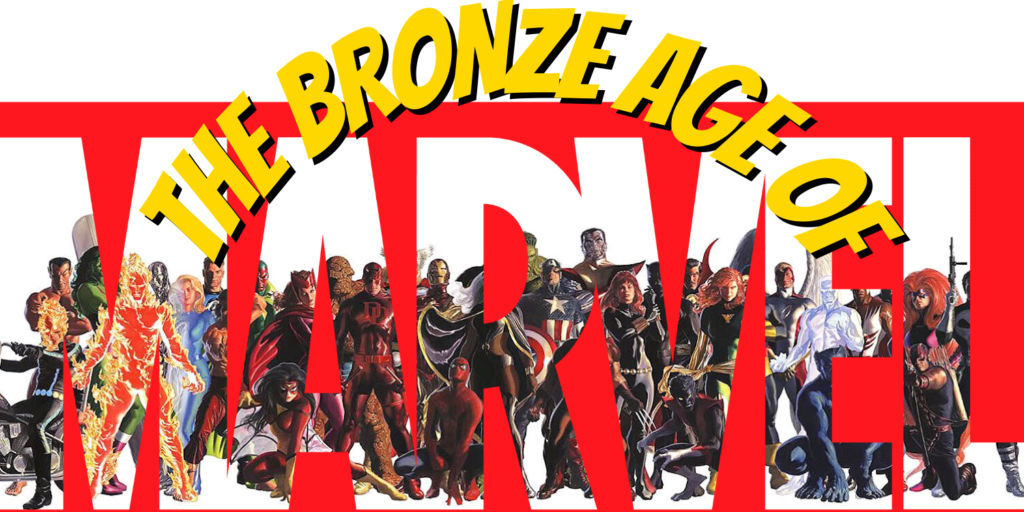
The Bronze Age of Marvel Comics: Expanding the Universe (1970-1985)
As the 1970s dawned, Marvel Comics continued to push boundaries, both creatively and commercially. The Bronze Age of comics, which lasted roughly from the early 1970s to the mid-1980s, was a period of experimentation and innovation for Marvel. During this time, the company introduced new characters, explored new genres, and tackled more mature themes than ever before.
Roy Thomas, who succeeded Stan Lee as Marvel Comics’ editor-in-chief in 1972, played a key role in this era. Thomas was instrumental in expanding the Marvel Universe, introducing characters like Conan the Barbarian, who brought a darker, more mythic element to Marvel’s lineup. Under Thomas’s guidance, Marvel also introduced more diverse characters, such as Luke Cage, the first black superhero to headline his own series, and the mystical warrior Iron Fist.
The Bronze Age was also marked by the rise of new writer-artist teams who brought their unique sensibilities to Marvel Comics. Marv Wolfman and Gene Colan redefined horror with their work on Tomb of Dracula, a series that introduced Blade, the vampire hunter who would go on to become a fan-favorite character. Steve Gerber brought a satirical, subversive edge to titles like Howard the Duck, which skewered the absurdities of American culture in a way that no other comic at the time was doing.
But perhaps the most significant development of this era was the rise of Chris Claremont, who, as mentioned earlier, took the X-Men from a struggling title to one of Marvel Comics’ biggest successes. Claremont’s writing was deeply character-driven, with long-running subplots and complex emotional arcs that kept readers invested for years. His work on the X-Men laid the groundwork for many of the stories and characters that would define the Marvel Universe in the decades to come.
The Bronze Age also saw the introduction of characters like the Punisher, a vigilante anti-hero with a brutal sense of justice, and Wolverine, a gruff, enigmatic mutant with a mysterious past. These characters brought a darker, more mature tone to Marvel Comics, reflecting the changing tastes of readers who were now older and more sophisticated than the audience of the 1960s.
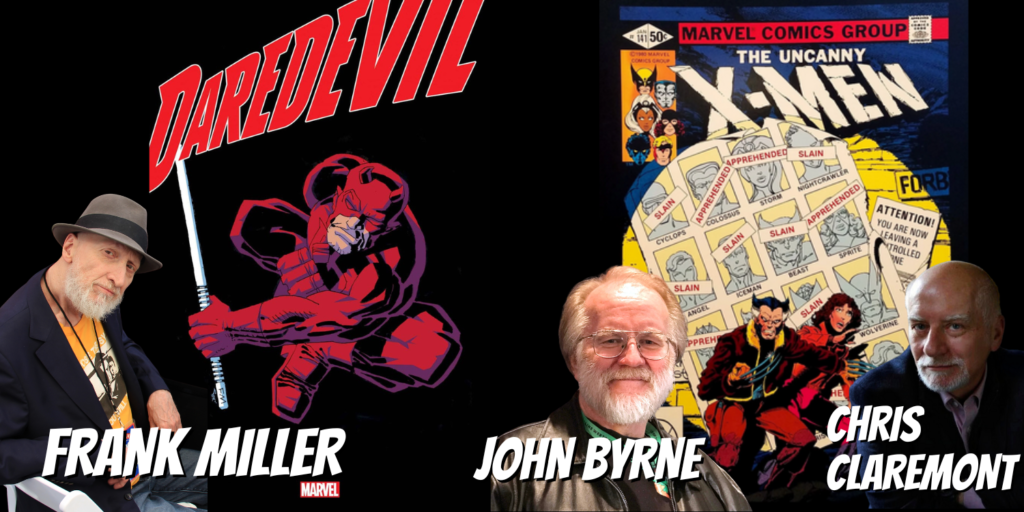
The Modern Age: Marvel Comics Faces Its Darkest Hour (1985-1996)
The 1980s and 1990s were a time of both great success and great turmoil for Marvel Comics. On the one hand, the company was producing some of the most critically acclaimed and commercially successful stories in its history. On the other hand, Marvel was facing internal conflicts, a changing market, and a looming financial crisis that would bring the company to the brink of collapse.
The 1980s saw the rise of Frank Miller, a writer-artist who redefined the superhero genre with his work on Daredevil. Miller’s stories were dark, gritty, and heavily influenced by film noir, and they brought a new level of sophistication to Marvel Comics. His work on The Dark Knight Returns for DC Comics would redefine Batman, but his impact on Marvel, particularly with stories like “Born Again” in Daredevil, was equally profound.
Another key figure during this time was John Byrne, who, along with Chris Claremont, shaped the X-Men into a powerhouse franchise. Byrne’s dynamic art and storytelling sensibilities helped define the look and feel of the Marvel Universe during this period, particularly in his work on titles like The Uncanny X-Men and The Fantastic Four.
But as Marvel Comics entered the 1990s, it found itself in the midst of a speculative boom that would ultimately prove disastrous. The comic book industry was thriving, fueled by collectors who believed that first issues and variant covers would be valuable investments. Marvel capitalized on this trend, flooding the market with new titles, crossovers, and special editions. For a time, it worked—Marvel was on top of the world. But the bubble burst in the mid-1990s, leading to a market crash that nearly destroyed the industry.
Marvel Comics was hit particularly hard. The company had overextended itself, acquiring trading card and toy companies, and when the market collapsed, Marvel found itself in financial ruin. In 1996, Marvel filed for bankruptcy. The once-mighty publisher was now on the brink of oblivion.
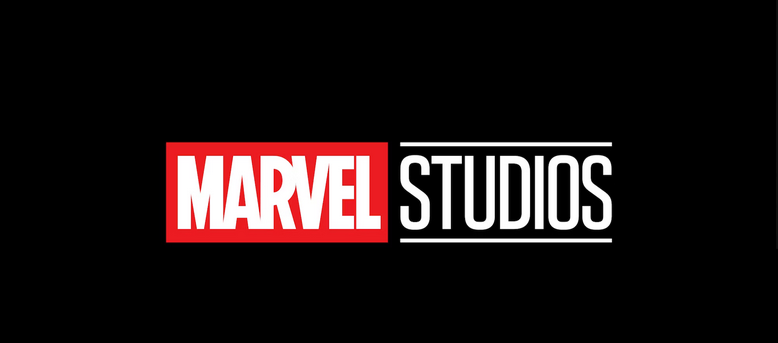
The Rebirth of Marvel Comics: Enter Marvel Studios (1996-2008)
Marvel’s bankruptcy in the mid-1990s was a turning point for the company. The years that followed were marked by restructuring, a renewed focus on core characters, and a series of creative and commercial successes that would lay the groundwork for Marvel Comics’ future. But the most significant development of this period was Marvel’s decision to take control of its own destiny by entering the world of film production.
In the late 1990s, Marvel began licensing its characters to major film studios. The success of X-Men (2000) and Spider-Man (2002) proved that Marvel characters could be box office gold, but the company still didn’t have full control over its cinematic destiny. That would change in 2005 with the creation of Marvel Studios.
Marvel Studios was founded with a singular vision: to bring Marvel’s interconnected universe to the big screen. The studio secured a $525 million loan to finance a series of films, starting with characters that had not yet been licensed out. The first film would be Iron Man, a character known to comic book fans but not a household name.
When Iron Man premiered in 2008, it exceeded all expectations. Directed by Jon Favreau and starring Robert Downey Jr. as Tony Stark, the film was a perfect blend of action, humor, and heart. Downey’s portrayal of the flawed, charismatic Stark resonated with audiences, and the film’s post-credits scene, teasing the formation of the Avengers, sent fans into a frenzy.
Iron Man wasn’t just a success—it was the beginning of a new era. Marvel Studios had proven that it could create its own blockbuster films, and the Marvel Cinematic Universe (MCU) was born. Over the next few years, Marvel Studios released The Incredible Hulk (2008), Thor (2011), Captain America: The First Avenger (2011), and finally, The Avengers (2012), which brought all these heroes together in a cinematic event unlike any other.
The MCU was a triumph, a realization of Stan Lee’s vision of a shared universe where characters and stories intersected in ways that felt organic and thrilling. Marvel Studios, now under the ownership of Disney, continued to expand the MCU, introducing new heroes like the Guardians of the Galaxy, Doctor Strange, and Black Panther, and culminating in the epic Avengers: Infinity War (2018) and Avengers: Endgame (2019).
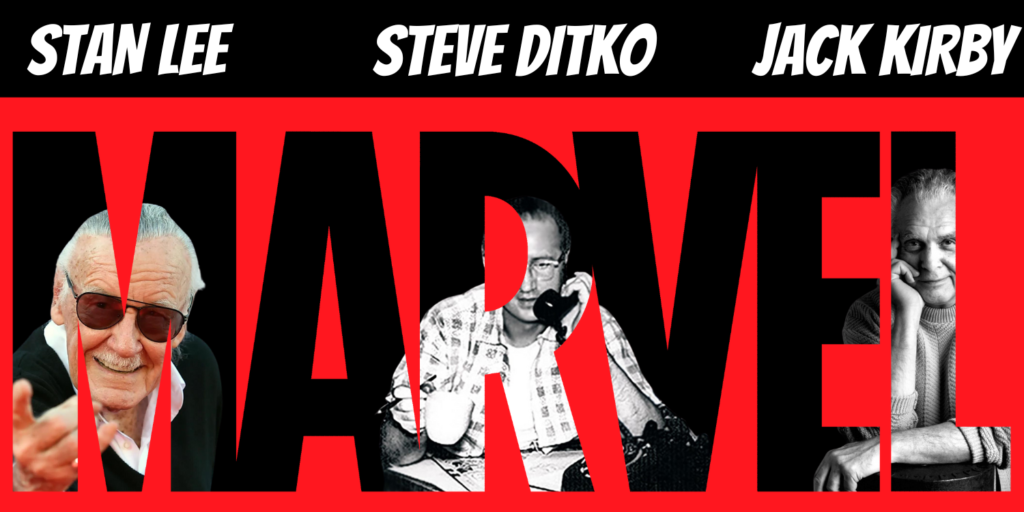
Marvel Comics Today: A Legacy of Imagination
Today, Marvel Comics is more than just a comic book company; it’s a cultural institution. The characters created by Stan Lee, Jack Kirby, Steve Ditko, and countless others have become cultural icons, inspiring generations of readers, viewers, and creators. Marvel Comics’ influence extends far beyond the pages of its books—its characters and stories have permeated every aspect of popular culture, from film and television to toys and theme parks.
But at its core, Marvel Comics remains true to the values that have guided it since the beginning. Marvel’s stories are about more than just superheroes—they’re about the struggles and triumphs of the human condition. They’re about the power of imagination, the importance of responsibility, and the belief that, no matter how dark the times, there will always be heroes ready to rise to the challenge.
Marvel Comics’ journey from a small publisher of pulp magazines to a global entertainment powerhouse is a testament to the enduring power of storytelling. The Marvel Universe continues to grow, evolve, and inspire, proving that, in the world of Marvel, anything is possible.
As Marvel Comics looks to the future, it does so with the knowledge that its greatest stories are yet to be told. The legacy of Marvel Comics is a living one, constantly evolving and expanding, just like the universe it has created. And as long as there are new worlds to explore, new characters to introduce, and new challenges to face, Marvel Comics will continue to be a beacon of creativity, imagination, and heroism for generations to come.
This comprehensive history of Marvel Comics is a celebration of the creativity, innovation, and resilience that have defined the company for more than eight decades. From its humble beginnings to its current status as a global entertainment giant, Marvel Comics has always been at the forefront of storytelling, creating characters and stories that resonate with readers of all ages. Marvel Comics is more than just a brand—it’s a legacy, one that will continue to inspire and captivate for many years to come.
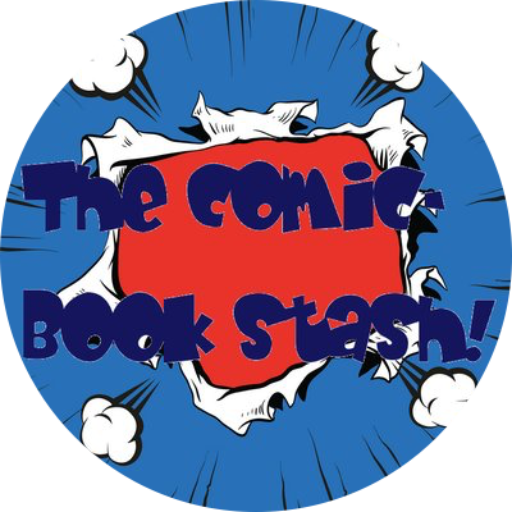
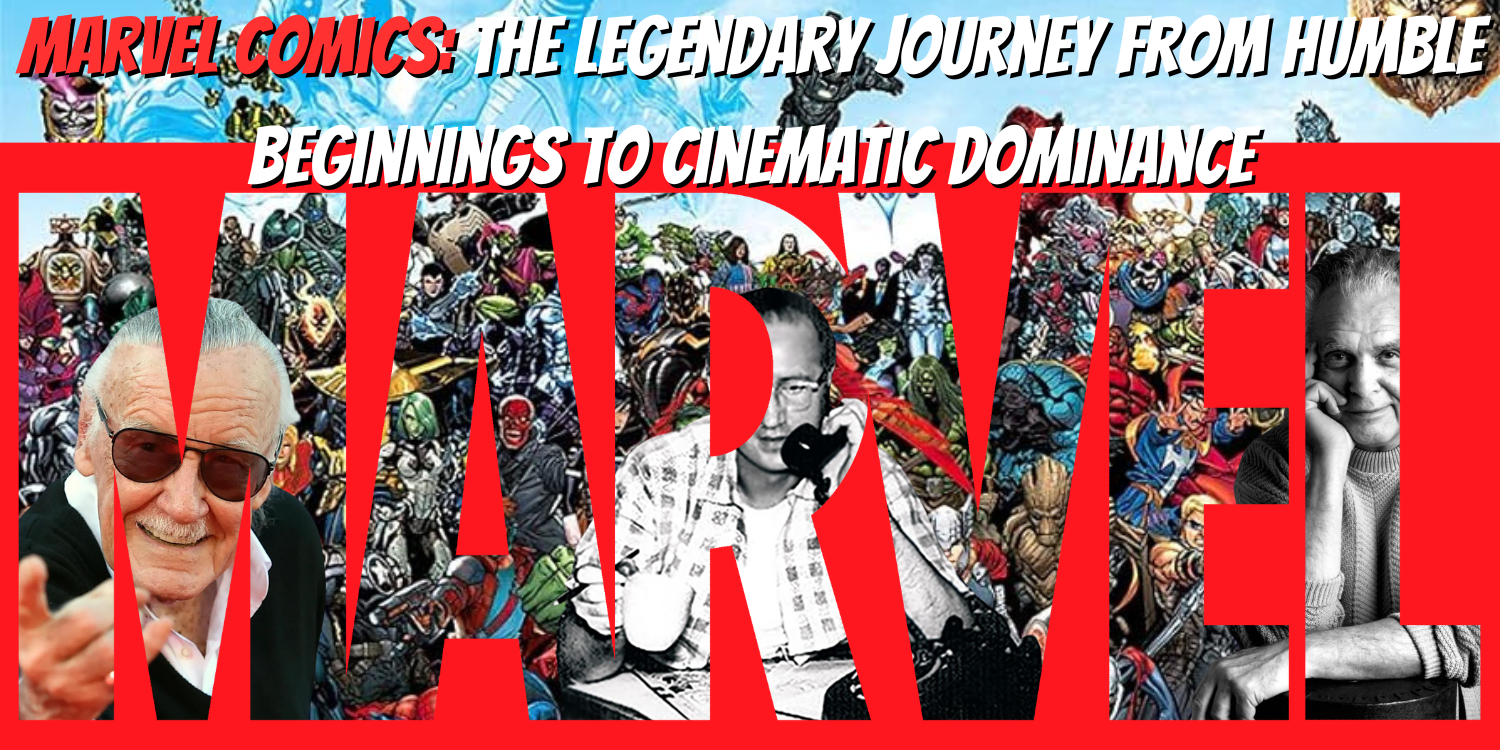
Leave a Reply